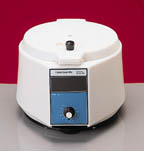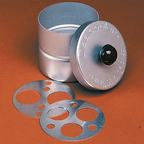|
This experiment is the culminating experiment for all these weeks of stoichiometric explorations. In our last experiment we explored a 1:1 reaction between sodium bicarbonate and carbon dioxide, that is to say that for every one mole of sodium bicarbonate that reacted, one mole of carbon dioxide was formed. 1:1 reactions are very simple mathematically and thus a good starting point for stoichiometric investigations. In this lab experiment we expand our knowledge by working with a non-one to one reaction involving copper (II) nitrate and potassium iodide. In addition to stretching our ability to calculate product and reactant amounts using reaction stoichiometry, we will also be exploring the concept of the limiting and excess reagents. It is not always obvious from gram amounts which reactant will run out first when a reaction is run. Two factors complicate the prediction: 1) reaction equations are balanced in moles not grams; and 2) moles are based on an atom or molecule's molecular weight. Thus 100 grams of O2 is a lot fewer moles than 100 grams of H2. So in the reaction 2H2 (g) + O2 (g) --> 2H2O (g), if given those 100 grams of each, which would be the limiting reactant? [See Answer] This is the type of question this lab seeks to help you answer. In addition to practicing your stoichiometry, we will also be learning about two new devices: the centrifuge and the dessicator.
In the last lab we made reference to a substance called a hydrate. A dessicant is simply a hydrate that has been stripped of all its water molecules. This makes the molecule very "hungry" for water. If you place a dessicant in a sealed container, that container is now called a dessicator, since anything placed inside it will be stripped of its moisture by the dessicant.
|
 |
Limiting and Excess Reagents


